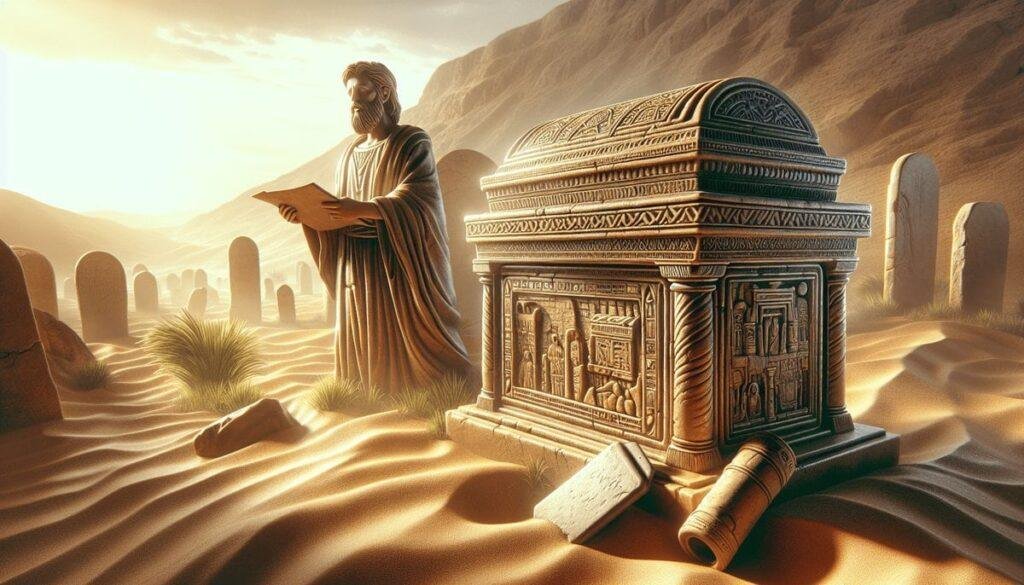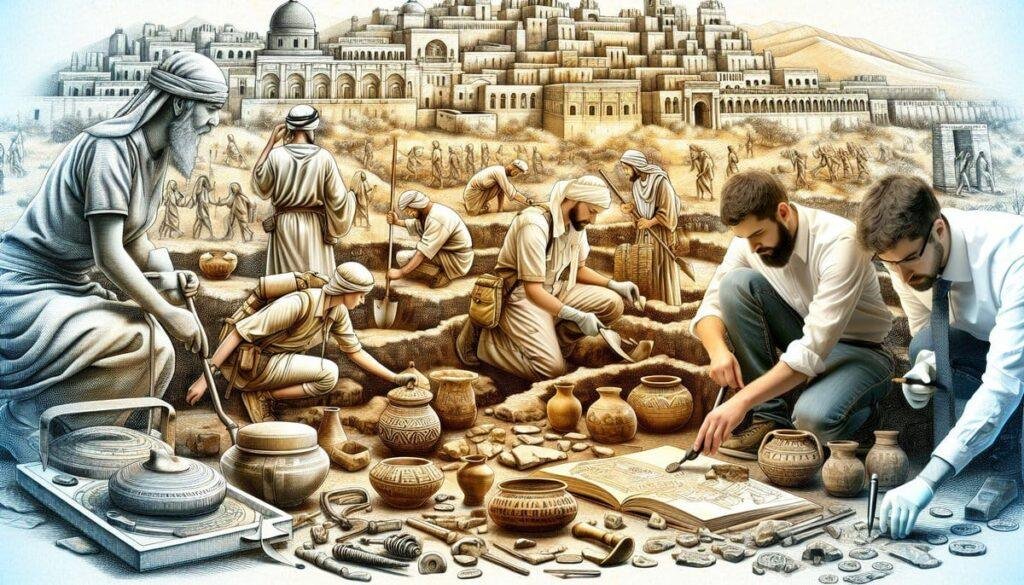What if the most sacred artifact in human history was hidden right beneath our feet? The Ark of the Covenant, a revered biblical artifact, has been the subject of countless legends and tales. One of the most captivating stories revolves around the Secret Palace Tunnel, rumored to be its hidden resting place. Let’s unravel this intriguing narrative together, as we journey through history, archaeology, and faith.

The Ark of the Covenant: A Brief Overview
Before we uncover the mysteries of the Secret Palace Tunnel, it’s essential to understand what the Ark of the Covenant is. According to biblical texts, it was a gold-covered wooden chest that held the stone tablets of the Ten Commandments. This sacred object represented God’s presence among His people and served as a focal point for worship and guidance in ancient Israel.
The Significance of the Ark
The Ark of the Covenant is not just a religious relic; it has profound cultural and theological significance. It symbolizes the covenant between God and the Israelites, standing as a testament to a guiding law and divine presence. The Ark was housed in the Temple of Solomon in Jerusalem, making its disappearance a pivotal moment in both Jewish and Christian traditions.
The Legend of the Secret Palace Tunnel
Now, let’s jump into the legend itself. The story of the Secret Palace Tunnel has been whispered among scholars and enthusiasts for centuries, intriguing anyone who hears it. Some believe that after the destruction of the First Temple in 586 BCE, the Ark was hidden away in a tunnel beneath the city of Jerusalem for its protection.
The Origins of the Legend
The origins of this legend trace back to various historical accounts, including the writings of Josephus, a first-century Jewish historian. He suggested that during times of turmoil, priests took measures to protect sacred relics. While there’s no concrete evidence, it certainly adds a layer of intrigue to the narrative.
Archaeological Evidence
Unearthing credible archaeological findings is crucial when discussing the whereabouts of the Ark. Numerous excavations have taken place around the Temple Mount, with researchers discovering tunnels and water systems dating back millennia. While concrete proof of the Ark itself has yet to surface, these findings provide a tantalizing glimpse into the world where the Ark once resided.
The Tunnel in Question
The Secret Palace Tunnel, said to be located beneath the Old City of Jerusalem, consists of extensive underground pathways. These tunnels may have been utilized for various purposes, including water supply, storage, and, perhaps, the concealment of significant artifacts. The exact configuration and extent of these tunnels remain a subject of ongoing study, sparking the curiosity of historians and archaeologists alike.
Exploring the Archaeological Landscape
It’s easy to become captivated by legends, but archaeological evidence helps ground our understanding in reality. Various excavations have provided insights into the life and times when the Ark of the Covenant was in use. Let’s take a closer look at some key archaeological sites related to this captivating narrative.
The Temple Mount
The Temple Mount is central to the story of the Ark, being its last known location. Excavations around the Temple Mount have uncovered evidence of ancient structures, including remnants of the First and Second Temples. These structures illustrate the grandeur of ancient Jerusalem and help contextualize where the Ark played a pivotal role in the spiritual life of the Israelites.
The City of David
The City of David, situated just south of the Old City of Jerusalem, is believed to be the original site of ancient Jerusalem. This area has been the focus of significant archaeological work, revealing residential areas, fortifications, and an intricate water system. Some experts theorize that these tunnels could have served as pathways for transporting sacred artifacts, including the Ark, during periods of crisis.
The Western Wall Tunnels
The Western Wall Tunnels offer another glimpse into the underground structures associated with the Temple Mount. They provide access to significant archaeological findings, including ancient stones and structures that date back to the time of the Second Temple. Exploring these tunnels is like walking through history itself, with each stone telling a part of the greater biblical narrative.
Theological Implications of the Ark’s Disappearance
The disappearance of the Ark of the Covenant raises pertinent theological questions and implications. How does its absence affect religious beliefs today? The Ark has long been regarded as a divine link between God and humanity, fueling a desire among believers to reconceptualize its absence in meaningful ways.
A Symbol of Divine Presence
For many, the Ark represented God’s presence among His people. Its disappearance could be interpreted as a divine response to the behavior of the Israelites. In the biblical narrative, the Ark was often associated with both blessing and judgment, and its absence could signify a break in communication between God and His people.
The Quest for Meaning
For some, the search for the Ark is less about the object itself and more about a spiritual inquiry. What does it mean to seek out sacred artifacts in a modern context? This quest can be seen as a reflection of our deeper yearning for connection with the divine and understanding our place in the world.

The Search for the Ark Today
The search for the Ark of the Covenant is not just a relic of the past; it continues to inspire modern adventurers, archaeologists, and theologians alike. Many believe that the Ark’s discovery would have profound implications for both religious and secular communities.
Modern Explorations
Today, numerous groups and individuals have embarked on expeditions to locate the Ark. These efforts often involve cutting-edge technology, historical research, and a mix of faith and science. While some pursue the Ark for its historical and cultural significance, others view it as a quest for spiritual renewal—a physical manifestation of faith.
Challenges in the Search
Despite the enthusiasm surrounding the search, several challenges complicate the quest for the Ark’s resting place. Political tensions in the region, ongoing archaeological debates, and the physical challenges of exploring ancient tunnels hinder progress. Moreover, the nature of the Ark as a sacred object brings additional layers of sensitivity to its discovery.
Cultural Impact and Legacy
The legend of the Ark of the Covenant, particularly the Secret Palace Tunnel, continues to resonate in popular culture. It has inspired countless books, films, and documentaries, capturing the imagination of audiences worldwide.
The Ark in Popular Culture
From movies like “Raiders of the Lost Ark” to various literary works, the Ark’s allure remains strong. These representations, while not always historically accurate, further ignite interest in the tangible aspects of the Ark’s narrative, blending fiction with ancient lore.
The Ark as an Educational Tool
The ongoing intrigue surrounding the Ark also presents opportunities for education and discussion. The story often serves as a lens through which individuals can explore historical, archaeological, and theological concepts, prompting deeper conversations about faith, relics, and human history.
Conclusion: Tying Ancient Contexts to Modern Perspectives
In unpacking the legend of the Secret Palace Tunnel and the Ark of the Covenant, we engage with a narrative that is rich in history, spirituality, and human aspiration. The mythology surrounding the Ark challenges us to contemplate our past, our beliefs, and our quest for meaning in a rapidly changing world.
As we reflect on the significance of the Ark and the Secret Palace Tunnel, it’s clear that while the object may be lost to time, the lessons and inquiries it has inspired endure. The enduring search for the Ark is not merely a search for an object; it is a search for connection, understanding, and perhaps, a glimpse of the divine itself. In essence, the Ark of the Covenant and its hidden resting place symbolize the timeless human desire to seek the sacred amid our everyday lives.


